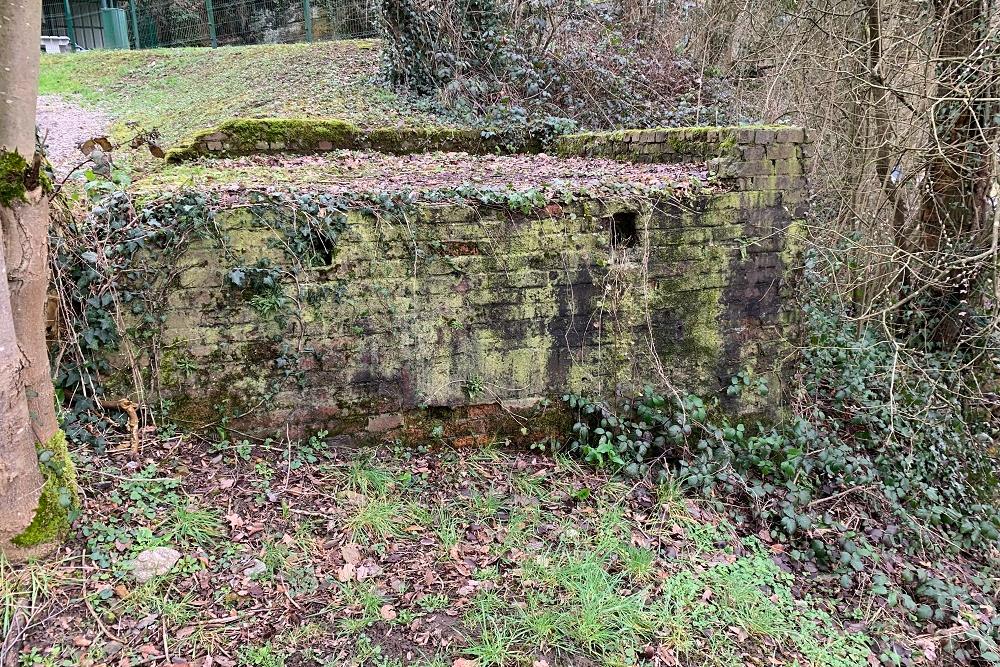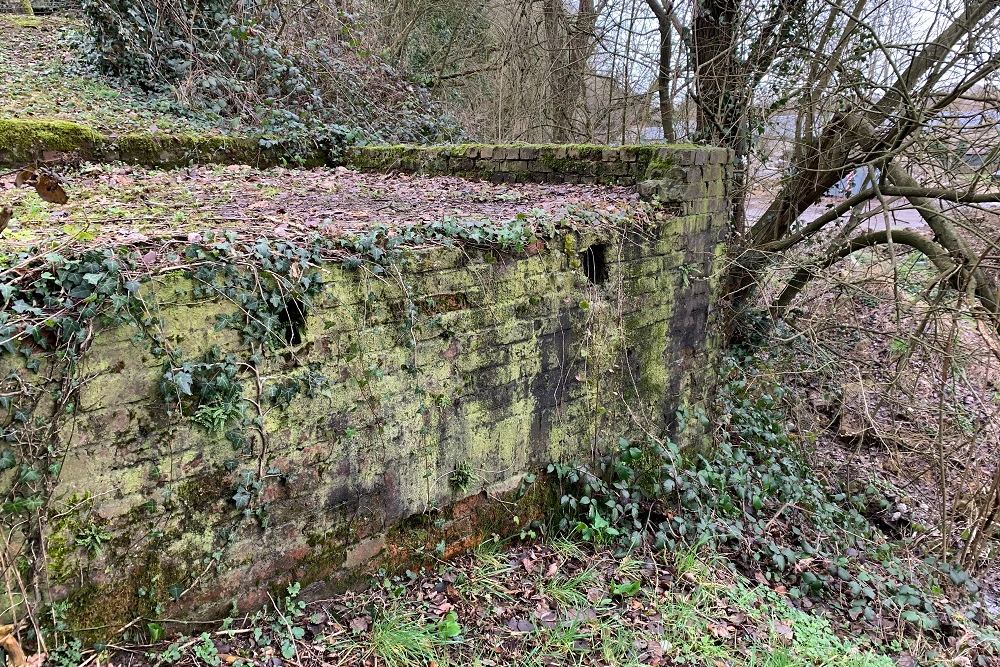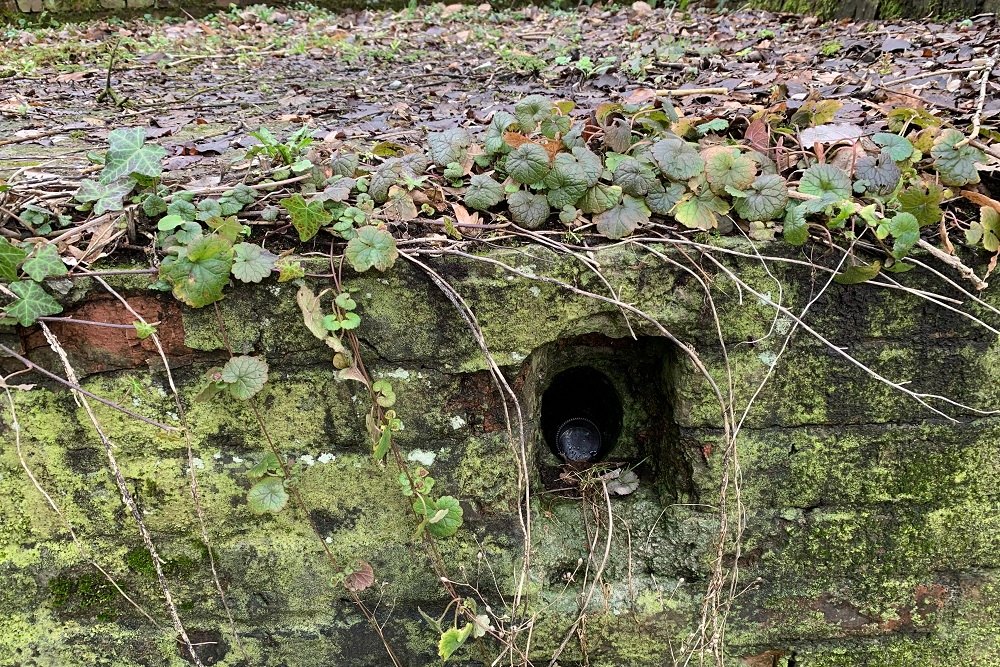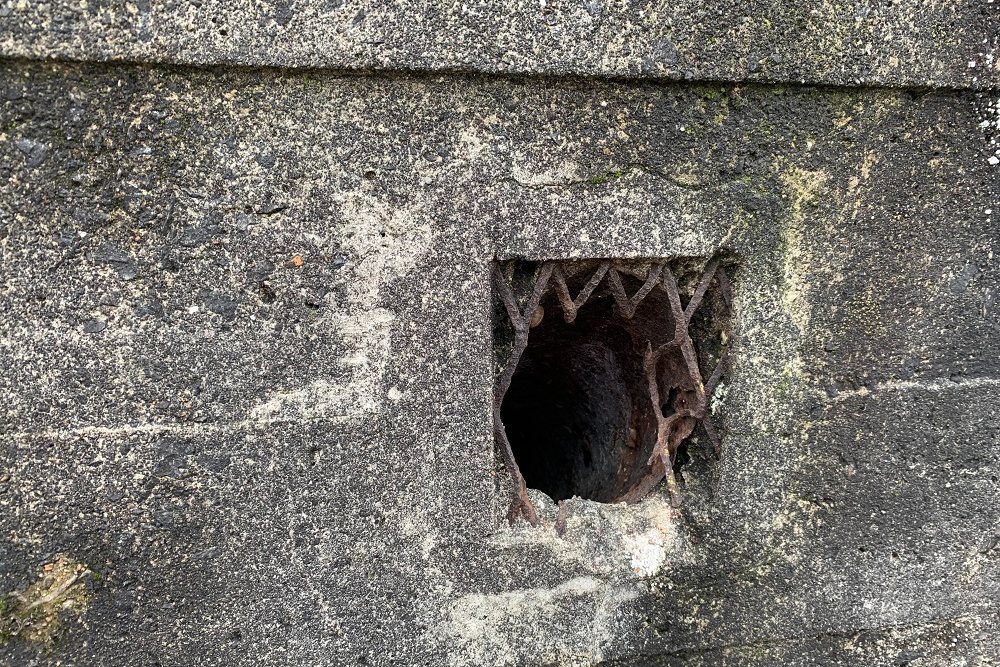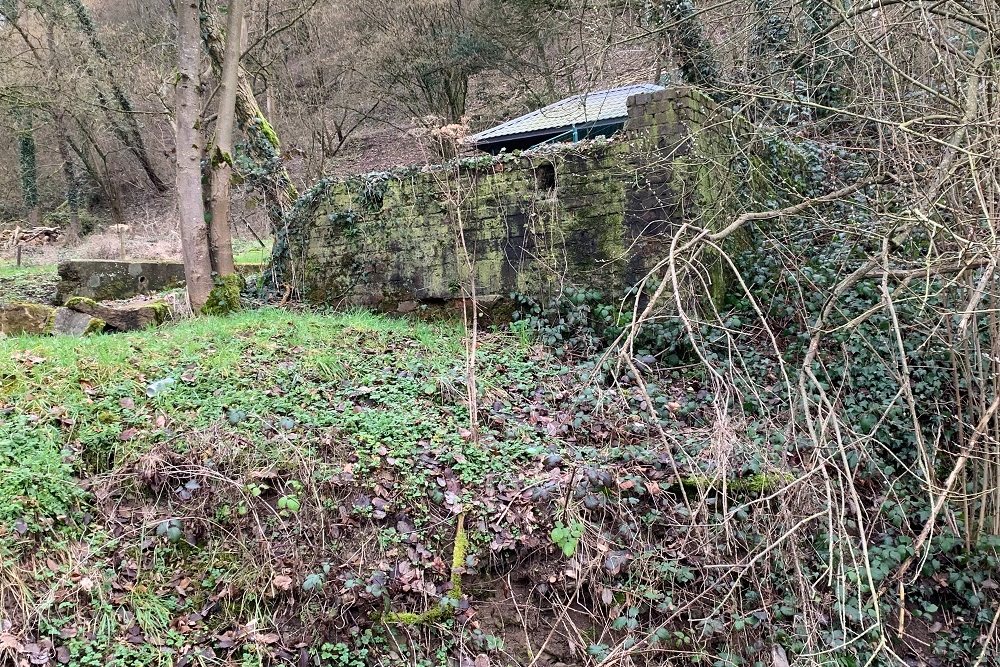Bunker F - Advanced Position Dolhain (Limbourg)
The defense lines of the city of Liege, known as "La Posistion Fortifiée de Liège" consisted of 4 lines of defense built around the cityi of Liège. It consisted out of 16 forts with numerous line bunkers in between.
In addition to these line bunkers, there were also so-called 'Position Avancées', advanced positions. These were located in Beusdael, Bilstain, Dolhain, Goé, Grunhaut, Henri-Chapelle, Hèvremont, Hockai, Hombourg, Jalhay, Limbourg, Malmedy and Stavelot.
This bunker 'F' belonged to the forward position of Dolhain (Limbourg). This position consisted of 12 bunkers, A through N. (Bunker D was never built).
Bunker 'F' is camouflaged with a brick exterior.
The bunker differs from the other bunkers of this forward position. It is clad in brick on the outside and originally had a tiled roof so that it resembled a house. Only up close does the practiced eye see that it is a bunker. At the front you can still see 2 of the 4 small venting openings that the other bunkers also have. In photo 3, you see steel pipe normally covered with a grille. For comparison see photo 4 which is taken of bunker B at Grunhaut, which is the same type of bunker, but without brick cladding.
You can also clearly see here that the concrete exterior is walled with brick.
Meanwhile, the two othe venting openings are below ground level. Furthermore, the brick sealed artillery opening is still just recognizable. Recognizable by the different color of bricks and the brick roll layer above the opening.
Presumably they served as observation and protection bunkers for the frontier cyclists stationed in nearby barracks of the of the 'Gardes Frontière'. These barracks were located in Hombourg and Henri-Chapelle, among others.
The 'cyclistes frontières', frontier cyclists, who guarded the frontiers, moved by bicycle on patrol and to the surrounding bunkers in adjacent sectors.
Do you have more information about this location? Inform us!
Source
- Text: Ed Lewandowski
- Photos: Ed Lewandowski
Nearby
Museum
Point of interest
Monument
- Memorial 86th Chemical Mortar Battalion - Dolhain
- Memorial Cemetery Limbourg - Limbourg
- Memorial Parish Virgin Mary Limbourg - Limbourg
Cemetery
- Belgian Graves Veterans Goé - Goé
- Belgian war graves Limbourg - Limbourg
- Belgian War Graves Limbourg - Limbourg
Fortification
- Bunker N - Advanced Position Dolhain (Limbourg) - Dolhain (Limbourg)
- Bunker C - Advanced Position Dolhain (Limbourg) - Dolhain (Limbourg)
- Bunker A - Advanced Position Dolhain (Limbourg) - Dolhain (Limbourg)
